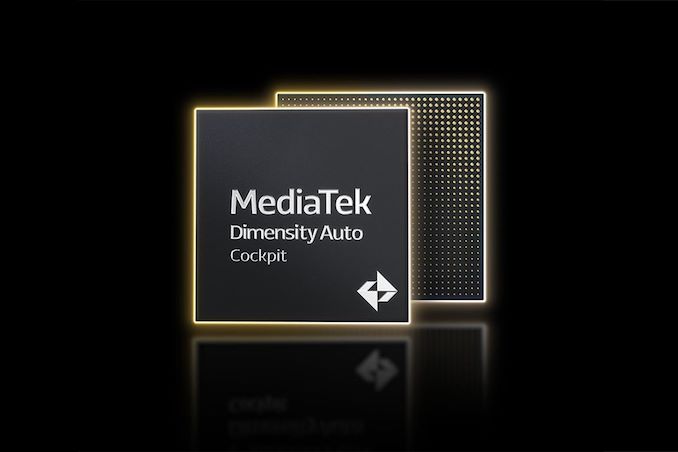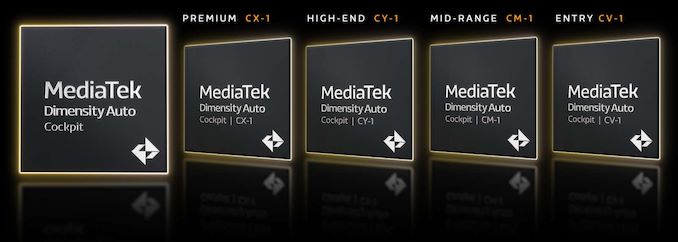
Original Link: https://www.anandtech.com/show/21318/nvidias-gpu-ip-drives-into-mediateks-dimension-auto-socs
NVIDIA's GPU IP Drives into MediaTek's Dimension Auto SoCs
by Anton Shilov on March 21, 2024 5:00 PM EST
MediaTek this week has introduced a new lineup of Dimensity Auto Cockpit system-on-chips, covering the entire market spectrum from entry-level to premium. And while automotive chip announcements are admittedly not normally the most interesting of things, this one is going to be an exception to that rule because of whose graphics IP MediaTek is tapping for the chips: NVIDIA's. This means the upcoming Dimensity Auto Cockpit chips will be the first chips to be released by a third-party (non-NVIDIA) vendor to be based around NVIDIA's GeForce graphics technology.
NVIDIA's first attempt to license its GPU IP to third parties dates back to the year 2013, when the company proposed to license its Kepler GPU IP and thus rival Arm and Imagination Technologies. An effort that, at the time, landed flat on its face. But over a decade later and a fresh effort at hand to license out some of NVIDIA's IP, and it seems NVIDIA has finally succeeded. Altogether, MediaTek's new Dimensity Auto Cockpit system-on-chips will rely on NVIDIA's GPU IP, Drive OS, and CUDA, setting a historical development for both companies.
MediaTek's family of next-generation Dimensity Auto Cockpit processors consists of four distinct system-on-chip, including CX-1 for range-topping vehicles, CY-1, CM-1, and CV-1 for entry-level cars. These are highly-integrated SoCs packing Armv9-A-based general-purpose CPU cores as well as NVIDIA's next-generation graphics processing unit IP. NVIDIA's GPU IP can run AI workloads for driver assistance as well as power infotainment system, as it fully supports such graphics technologies like real-time ray-tracing and DLSS 3 image upscaling.
The Dimensity Auto Cockpit processors are monolithic SoCs with built-in multi-camera HDR ISP, according to HardwareLuxx. This ISP supports front-facing, in-cabin, and bird's-eye-view cameras for a variety of safety applications. Additionally, these processors feature an audio DSP that supports various voice assistants.
The announcement from MediaTek does not disclose which generation of NVIDIA's graphics IP they're adopting – only that it's a "next-gen" design. Given the certification requirements involved, automotive SoC announcements tend to be rather conservative, so it remains to be seen just how "next gen" this graphics IP will actually be compared to the current generation Ada Lovelace architecture.
The new MediaTek SoCs will be fully supported by NVIDIA's Drive OS, which is widely used by automakers already. This will allow automakers to unify their software stack and use the same set of software for all of their cars powered by MediaTek's Dimensity. Furthermore, since NVIDIA's Drive OS fully supports CUDA, TensorRT, and Nsight, MediaTek's Dimensity SoCs will be able to take advantage of AI applications developed for the green company's platform.
“Generative AI is transforming the automotive industry in the same way that it has revolutionized the mobile market with more personalized and intuitive computing experiences,” said Jerry Yu, Corporate Senior Vice President and General Manager of MediaTek’s CCM Business Group. “The Dimensity Auto Cockpit portfolio will unleash a new wave of AI-powered entertainment in vehicles, and our unified hardware and software platform makes it easy for automakers to scale AI capabilities across their entire lineup.”
Without a doubt, licensing graphics IP and platform IP to a third party marks a milestone for NVIDIA in general, as well as its automotive efforts in particular. Leveraging DriveOS and CUDA beyond NVIDIA's own hardware platform is a big deal for a business unit that NVIDIA has long considered poised for significant growth, but has faced stiff competition and a slow adoption rate thanks to conservative automakers. Meanwhile, what remains to be seen is how MediaTek's new Dimensity Auto Cockpit processors will stack up against NVIDIA's own previously announced Thor SoC and associated DRIVE Thor platform, which integrates a Blackwell-based GPU delivering 800 TFLOPS of 8-bit floating point AI performance.
Source: MediaTek








